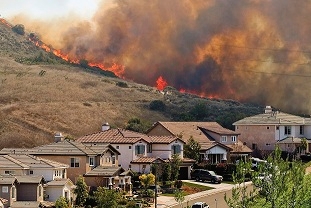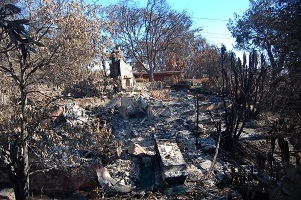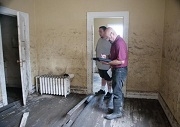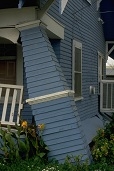
Small Step: Evaluate your homeowners insurance coverage.
If natural disaster destroyed your home, would your homeowners insurance policy pay enough to rebuild the house?
The recent fires and floods across the country started me thinking about my own financial preparation and ability to recover from a natural disaster. Like most Americans, my home is my largest financial asset and the cornerstone of my retirement plans.
It's makes financial sense to be sure my homeowners insurance policy will protect my investment if there is a natural disaster.
Three Questions to Ask About Your Homeowners Policy:

Policies generally cover either the “actual value” or the “replacement value” of a home. The names sound similar, but there can be a big difference in the coverage.
An “actual value" policy pays to rebuild the house based on its depreciated value. If you have an older home, the policy may pay considerably less than what it what it would cost to rebuild today using new materials.
For example, my house (built in the 1950s) has a 20 year old roof. If a fire destroyed the house an "actual value" policy would pay the depreciated value of the roof, which would not be nearly enough to replace it at today's prices. The same goes for replacing older bathroom fixtures and worn kitchen floor coverings.
In contrast, a replacement value" policy would cover the full cost (less a deductible) to rebuild at current prices.
2. Do you have enough insurance coverage?
First, read your home owners policy to find out the dollar value of your coverage.
How do you know if you have enough? Get a rough estimate of what it would cost to rebuild your home by asking a local builder or contractor the cost per square foot for new construction (labor and materials) and multiply the cost by the total square footage of your house.

Don't base the amount of insurance on the market value of your home. If you do, you'll buy more insurance than you need, since that price includes the value of the land your home is on. Most likely, the land will still be useable after a natural disaster, so you only need to insure the structure.
Be sure to update the policy value if you do a substantial renovation or make an addition to the house.
3. Does the policy cover the disasters you are likely to face?
Review the policy document to find out. Standard homeowner policies, known as HO-3 policies, cover specified disasters or "perils" which are listed in the written policy: fire, lightning, tornadoes, wind storms, hail, explosions, smoke, vandalism and theft. Most do NOT cover damage caused by floods and earthquakes.

Visit FEMA's National Flood Insurance Program (NFIP) website to learn more. If you live in a moderate-to-low risk area and are eligible for the Preferred Risk Policy (low cost), your flood insurance premium could be as low as $129 a year.
If you live in a flood prone area, contact your insurance agent or go to your State Insurance Commission's website to find out about costs and purchasing flood insurance.

You can buy a supplemental policy that covers earthquakes from an insurance agent. Californians may contact the California Earthquake Authority (CEA), a publicly managed organization that provides catastrophic residential earthquake insurance.
Financial Planning Tip: Homeowners insurance is an important part of a financial plan. Plan to be covered!